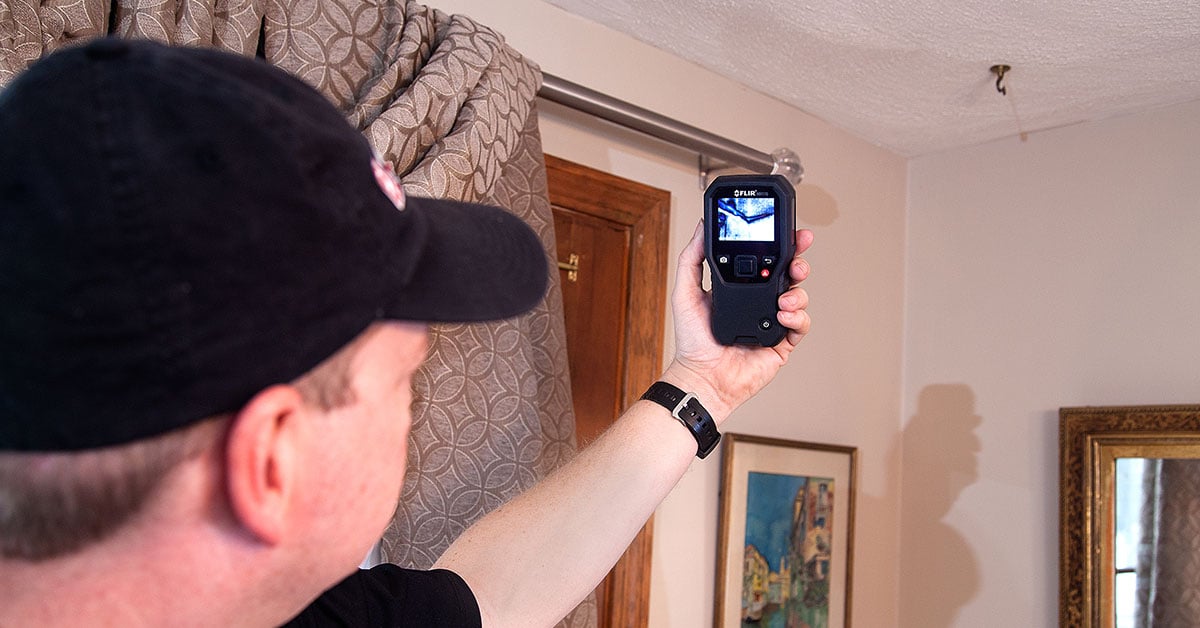Exactly how to Inspect If Your House Has a Concealed Leakage
Exactly how to Inspect If Your House Has a Concealed Leakage
Blog Article
Are you currently hunting for information around Locating water leaks?

Early detection of leaking water lines can mitigate a possible catastrophe. Some small water leaks may not be noticeable.
1. Take A Look At the Water Meter
Every home has a water meter. Checking it is a proven manner in which helps you uncover leaks. For beginners, switch off all the water sources. Guarantee no person will certainly purge, utilize the faucet, shower, run the cleaning equipment or dishwashing machine. From there, go to the meter and watch if it will change. Because no one is using it, there must be no motions. That indicates a fast-moving leak if it moves. If you detect no adjustments, wait an hour or 2 and also inspect back again. This implies you might have a slow-moving leakage that can even be underground.
2. Examine Water Consumption
If you find unexpected changes, despite your intake being the very same, it indicates that you have leaks in your plumbing system. A sudden spike in your costs suggests a fast-moving leak.
Meanwhile, a steady rise each month, even with the very same practices, reveals you have a sluggish leak that's likewise slowly intensifying. Call a plumber to thoroughly inspect your home, specifically if you feel a warm area on your flooring with piping below.
3. Do a Food Coloring Examination
When it comes to water usage, 30% comes from toilets. If the shade somehow infiltrates your dish during that time without flushing, there's a leak in between the storage tank and also dish.
4. Asses Outside Lines
Do not neglect to examine your exterior water lines as well. Must water leak out of the link, you have a loosened rubber gasket. One small leak can squander lots of water as well as spike your water costs.
5. Assess the circumstance and evaluate
Home owners ought to make it a habit to examine under the sink counters and even inside cabinets for any type of bad odor or mold growth. These 2 red flags show a leak so timely attention is needed. Doing regular evaluations, also bi-annually, can save you from a major issue.
A lot more significantly, if you recognize your home is currently old, maintain a watchful eye on your heating units, pipes, pipes etc. Check for stainings and damaging as most pipelines and home appliances have a life expectancy. They will certainly also normally wear away because of tear as well as use. Do not wait for it to intensify if you think dripping water lines in your plumbing system. Call an expert plumber today so you don't wind up with a dreadful mess in your home.
Early discovery of dripping water lines can mitigate a prospective catastrophe. Some little water leakages may not be visible. Inspecting it is a guaranteed means that aids you uncover leaks. One tiny leak can squander lots of water as well as surge your water expense.
If you presume dripping water lines in your plumbing system, do not wait for it to intensify.
How to Know If Your Home Has a Hidden Leak
Water Meter Reveals Inexplicable Water Usage
If you’d like to test whether or not there’s a leak somewhere in your home, you can do this using your water meter. Here is how to conduct the test:
Don’t use any water in your home for at least 30 minutes; this also means not turning on faucets or water-using appliances.
Go outside, and check your water meter for activity.
If your water meter shows that there was activity, even though no one was using any water, this proves that there is a leak in your home.Visible Mold or Mildew Growth
Leaks behind walls create moist, dark environments that allow mold and mildew to grow and thrive. Eventually, you might see mold growth forming on the wall closest to a hidden leak.
If mold is growing in an area that receives a high amount of moisture, such as a bathroom, it may simply be an indication that better ventilation is needed. However, if you see mold growth on a wall or the ceiling in an area where you would not expect, you probably have a hidden leak.
Musty, Mildew Odor
Sometimes you might not be able to see the mold or mildew that is growing as a result of a leak. However, the smell can give the problem away just as easily. If you catch a whiff of something musty, there’s a good chance that old water is collecting somewhere in your home that you can’t see.
Stained/Warped Walls, Ceilings, or Floors
When your home soaks up water, a variety of red flags can become visible, including ceiling stains, bubbling drywall, warped walls, and sagging floors. While these issues can be caused by excess humidity, they can also be signs that a pipe or plumbing connection has started leaking behind your walls.
Inexplicably High Water Bill
After a while, you get a general sense for what your water bill should be. If you own a pool or sprinkler system, your bill will tend to be higher during summer. However, if you receive a water bill that seems especially high, and you can’t figure out what caused it, then you may have a hidden leak somewhere that’s increasing your bill.
https://www.plumbingjoint.com/blog/2019/july/how-to-know-if-your-home-has-a-hidden-leak/

As a fervent reader on Top leak detection hacks, I figured sharing that piece of content was necessary. Do you know about somebody who is occupied with the niche? Why not promote it. We love reading our article about Hacks to detect leaks.
Report this page